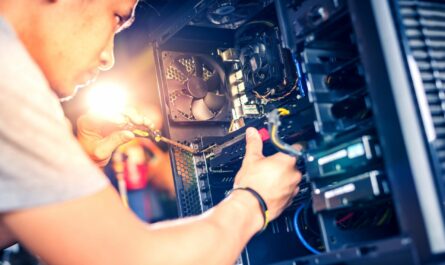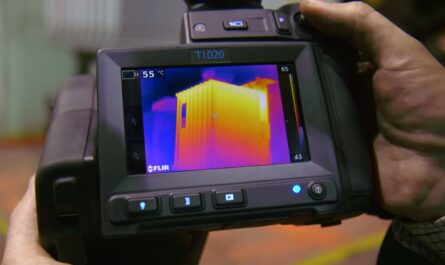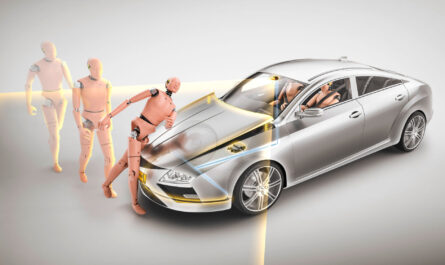The aviation industry has come under increased scrutiny in recent years for its significant contribution to global carbon emissions. While air travel allows us to connect and explore in ways not possible before, the traditional jet aircraft rely on fossil fuel combustion which pollutes the air and damages the environment. Recognizing the urgent need to transition to more sustainable options, researchers and engineers around the world are working on developing practical zero emission aircraft that can operate without producing any direct carbon emissions.
Batteries and Electric Propulsion Systems
One of the most promising technologies being explored are electric aircraft that replace jet engines with electric motors powered by advanced battery systems. While current battery densities are still too low to enable electric flight over long distances, rapid innovation is extending flight ranges every year. Several startups like Eviation, Heart Aerospace and MagniX are developing all-electric passenger Zero Emission Aircraft slated to enter service in the mid 2020s. These utilize high-capacity lithium-ion batteries and distributed electric propulsion. Test flights have proven the conceptual feasibility and companies are now working to improve performance and reduce costs. Mass manufacturing of advanced batteries will be key to tackling the main challenge – enhancing energy density to match jet fuel.
Hydrogen Fuel Cells for Longer Routes
For longer haul routes beyond the capabilities of batteries, hydrogen fuel cells are seen as another potential zero-emission solution. Unlike batteries, fuel cells generate electricity through an electrochemical reaction between stored hydrogen and oxygen from the air. The only emission is water vapor, making them a cleaner alternative to traditional jet fuel. Companies like ZeroAvia, Universal Hydrogen and Deutsche Aircraft are developing hydrogen-electric regional aircraft targeting routes under 1,000 km by the end of this decade. Challenges lie in reducing fuel cell and tank costs while improving gravimetric energy density. Infrastructure would also need to adapt to transport and refuel liquid hydrogen safely. But the technology offers huge potential if these obstacles can be overcome.
Sustainable Aviation Fuels
Rather than relying solely on new aircraft designs, sustainable aviation fuels (SAF) produced from renewable resources offer a way to significantly lower emissions from existing jet aircraft as well. SAF can be dropped into current fuel tanks with no modifications needed. They are chemically similar to petroleum-based jet fuel but derive from waste biomass and other renewable feedstocks. Tests have proven they can reduce greenhouse gas emissions by 60-100% compared to fossil fuels depending on the production process. Airlines are currently flying increasing numbers of test and commercial SAF flights. While still more expensive than traditional jet fuel, production is scaling up globally driven by government incentives and mandates. If widely adopted, SAF present the most economically viable path in the near to medium term to green commercial air travel.
Hybrid Electric and Turboelectric Options
Rather than a single breakthrough solution, experts argue the most pragmatic approach may be a portfolio of technologies tailored for different zero aircraft missions. Hybrid electric configurations represent an intermediate step between conventional and fully electric planes. They integrate electric motors and batteries to supplement traditional engines, enabling fuel burn reductions of 20-30%. Regional turboprop aircraft are well suited for hybridization. Meanwhile, companies like Rolls-Royce are exploring turboelectric architectures that distribute propulsive power via electric motors rather than mechanical gearboxes for more flexibility and potential efficiency gains of 5-15%. Hybrid and turboelectric systems could function as a bridge to help optimize performance as battery and fuel cell technologies continue enhancing.
Advancing Aerodynamic Efficiency
Besides new propulsion technologies, significant gains may also come from increasing aerodynamic efficiency through design innovations. Advanced composites, lightweight alloys and optimized wing designs offer weight savings to reduce fuel needs for any given range. Unconventional layouts like the blended wing body and truss braced wing enhance lift-to-drag ratios. Morphing wings able to alter their camber or twist in flight may further streamline airflow. Computational fluid dynamics tools are enabling ever more refined shaping of surfaces right down to microscopic textures for minimized drag. When applied across entire fleets, improvements as small as 1-2% can have huge cumulative impacts on fuel consumption and carbon mitigation over time.
Advancing Policy and Infrastructure
While zero emission aircraft development progresses rapidly on the technology front, favorable policy measures and infrastructure development will be equally critical to drive the necessary uptake and expansion of these new solutions. Governments are proposing Clean Skies regulations and tax incentives for sustainable fuels to establish markets and steer investment towards the most beneficial solutions. International alliances are pursuing joint research programs to accelerate innovation. Airport authorities are exploring the integration of hydrogen fueling stations and electric ground support equipment in line with aircraft development roadmaps. With coordinated multi-stakeholder efforts across policy, industry and operations, experts predict a growing number of hybrid, electric and hydrogen aircraft could begin commercial service from the late 2020s, helping gradually transform aviation into a greener and more sustainable transport mode.




